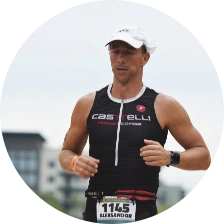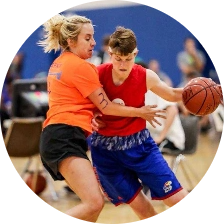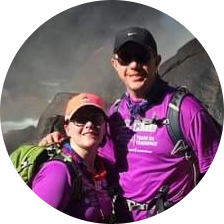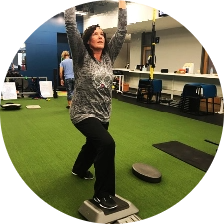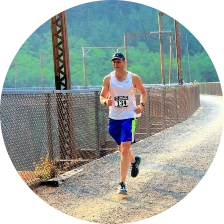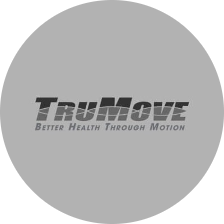Services
Achilles Tendonitis Therapy

Achilles tendonitis is the irritation or inflammation of the Achilles tendon. It is the body’s natural response to injury or disease and often manifests as swelling, irritation, or pain.
The Achilles tendon is the largest tendon in the body, running down the lower back of the leg and bridging the calf muscles and the heel bone. It is used for climbing, running, walking, jumping, and standing on one’s toes.
Even if the Achilles tendon is able to withstand the stress of an array of activities, it can still suffer from overuse and degeneration. A patient may need Achilles tendonitis therapy or treatment for this condition.
Two Types of Achilles Tendonitis
The two types of this condition are differentiated by the location of the problem in the tendon. Both types can cause the tendon fibers to calcify or harden.
Noninsertional Achilles Tendonitis
The problem lies in the fibers in the middle part of the tendon. These fibers have begun to degenerate and show tiny tears, often also swelling and thickening. Noninsertional Achilles Tendonitis usually affects younger and more active people.
Insertional Achilles Tendonitis
On the other hand, insertional Achilles tendonitis affects the lower part of the tendon, where it connects or inserts to the heel bone. Extra bone growth or bone spurs usually occur. This type of tendonitis can also happen any time, to any type of patient, including inactive people.
However, more often than not, insertional Achilles tendonitis tends to affect runners or other types of people that may have exhibited years of overuse for the tendon.
Common Causes
There are some factors that make Achilles tendonitis more likely to occur.
- Having bone spur or extra bone growth. This usually occurs in the area where the tendon meets the heel bone. This extra bone can rub against the tendon and cause pain and irritation.
- Suddenly increasing the intensity or the amount of work done by the tendon. This usually occurs when a person switches to a more intensive workout routine without giving the body time to adjust.
- Having a biomechanical dysfunction above the foot. Achilles tendonitis sometimes presents itself when there is movement dysfunction elsewhere in the leg or up to the hip and even the upper spine. Learn more about these biomechanical causes here.
Common Symptoms
The following are a few of the most common symptoms of Achilles tendonitis:
- Stiffness accompanied by pain along the Achilles tendon which usually gets worse in the morning
- Pain in the back of the heel or along the tendon which usually gets worse with stress or activity
- Thickening of parts of the tendon
- Extra bone growth or bone spur
- Swelling that does not subside and progressively worsens throughout the day
People who have experienced a popping sensation along the back of their calf or heel should consult a doctor or physical therapist immediately. It may be an indication that the tendon has ruptured.
Diagnosing the Condition
Doctors look for the following signs when diagnosing Achilles tendonitis:
- Thickening of the tendon
- Swelling along the tendon up to the back of the heel
- Bony spurs behind the heel
- Pain along the tendon up to the back of the heel
- Point of tenderness along the tendon
- Decrease in the ability to move the foot along the ankle
Doctors also perform the following tests to diagnose this condition:
- X-rays determine whether there are bony spurs behind the heel or if the lower part of the tendon has hardened or calcified. These signs point to the insertional type of Achilles tendonitis.
- MRI or magnetic resonance imaging is used if the treatment plan includes surgery. It will highlight the extent of the damage in the tendon so the medical professional can plan the surgery.
However these diagnostic tests do not identify the actual cause. A more detailed movement assessment assessing how the entire body moves is required to find a long term solution. Using the Superior Method to identify these movement dysfunctions is the best course of action.
Treating Achilles Tendonitis
Non-surgical treatment is commonly recommended for Achilles tendonitis patients especially if they have not had previous treatment plans. This is a combination of rest, exercise, medications, and physical therapy using the Superior Method This treatment course can take anywhere from three to six months before symptoms subside.
Most medical providers will offer these treatment options:
- Pain medication – Non-steroidal anti-inflammatory medication like ibuprofen or naproxen are usually recommended for this condition.
- Pain management – The first few months of treatment will be about managing the pain until the symptoms fully subside.
- Injections – Cortisone injections may be recommended. It is a type of anti-inflammatory steroid injected directly into the Achilles tendon.
TruMove recognizes that these are only masking the symptoms of pain and not finding a long-term solution. The best treatment option comes from using the Superior Method developed by our own Dr. Andrew Gorecki.
Through this method, a doctor works hand-in-hand with the patient to identify the root causes and to address them and relieve pain with a lasting solution. We offer the following treatment options:
Heat and Cold therapy
Heat packs facilitate tissue healing and relaxes the muscles. Cold packs address swelling. One or both of these may be recommended based on the patient’s needs. Both packs alter circulation to relieve pain.
Deep Muscle Stimulation
Mechanical vibrations that penetrate into the muscle tissue facilitate tissue regeneration and improve one of the most common causes of pain – the lactic cycle. The procedure also improves circulation and lymphatic flow to help relieve pain.
Dry Needling
Trigger points or local contractures are triggered by monofilament needles to alleviate pain in a quick, safe, and virtually painless way. This option is particularly useful in addressing musculoskeletal presentations.






